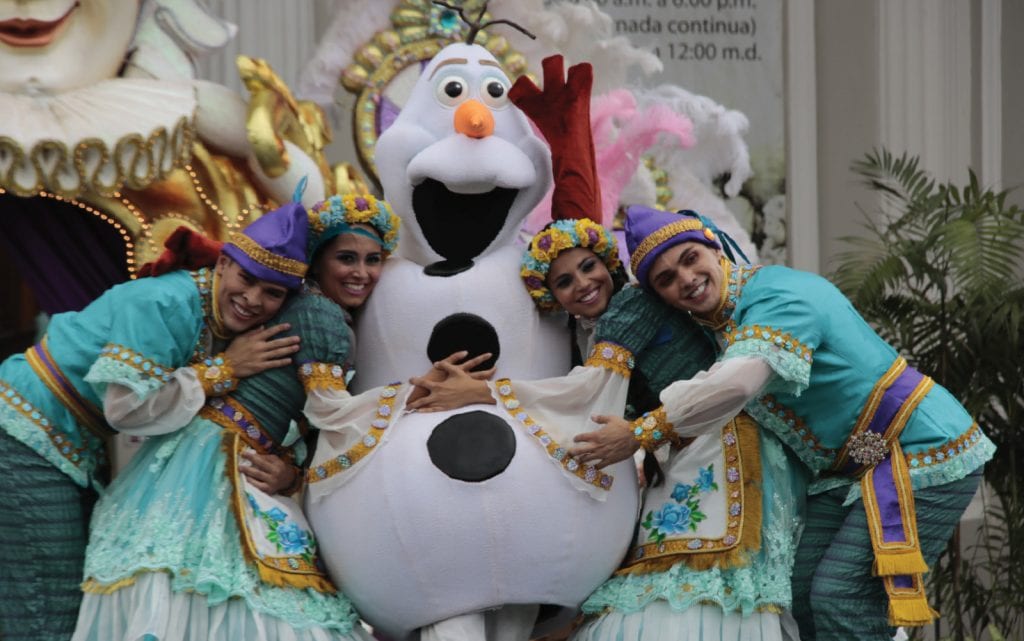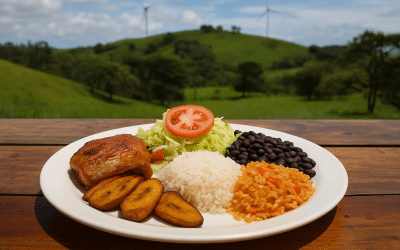Christmas in Costa Rica: Celebrations Coast to Coast. Costa Ricans are proud of their heritage, steeped in culture and tradition. Notably, Ticos enjoy celebrating Christmas as an integral part of their history for half a millenium.
Virtually all families and many businesses throughout the country have their own nativity scene, known as el portal or el pasito, on prominent display. On Christmas Eve (Noche Bueno), a statue of baby Jesus is placed in the manger cradle. Rounds of rompopes (eggnog with brandy) are shared before attending midnight mass (misa de gallo), which is a two-hour marathon.Christmas Day (Día de Navidad) is designed as family time, for relaxing, eating and sharing presents.
Customarily, the entire month of December is dedicated to Christmas celebrations throughout Costa Rica. All public schools are closed until the second week of January, when a new school year begins.
Early signs of the season
are unmistakably vibrant in San José.

San José spectacles
Early signs of the season are unmistakably vibrant in San José, starting the first week of December. Families delight in the annual spectacle of lighting a giant Christmas tree outside the Children’s Hospital, as well as the Children’s Museum, the National Museum and other prominent locations.
From December 1 to 15, the Avenizado attracts crowds of all ages to Central Avenue, where festivities along the boardwalk includes free concerts and masquerades, plus theater and storytelling for children in the Plaza de Cultura.
Starting early on the second Saturday in December, San José’s main streets start filling up with more than a million people waiting to be dazzled by the Fiesta de la Luz (Festival of Lights). The high-wattage parade of floats, marching bands, clowns and jugglers starts from Sabana Park at 6 p.m., concluding around midnight at the National Museum on Second Avenue.

Around the country
A relatively modest-scale Christmas tradition called Las Posadas (Spanish for lodging or accommodation) begins during the third week of December. Reenacting the biblical nativity story, children dressed as shepherds go from house to house in their neighborhoods asking for a place to stay. Ultimately, they are invited into a pre-ordained home and fed dinner. Las Posadas is a waning practice that now only takes place in smaller towns and villages.
Guanacaste is an example of communities within a region of Costa Rica collaborating to avoid date conflicts as much as possible. Starting with Liberia’s Festival Blanca Navidad on December 2, local cultural events are spaced out for the most part over two weeks, successively, in Nandayure, Tilarán, Cañas, Nicoya, Bagaces, Carrillo, Santa Cruz and Hojancha.
Fiesta fun
The week between Christmas and New Year’s is when Costa Rica’s annual fiesta season gets into full swing. San José‘s Carnaval, on December 27, features dance group performances, traditional costumes and a bounties of mouth-watering food. Throughout the country, Fiesta de Zapote is celebrated during the two weeks after Christmas. Plan to enjoy all the same sights, sounds and aromas that will characterize the ensuing series of local rodeos rotating from one town to the next until the end of March. Tico-style “bullfighting” (harmless for the bulls) is no less popular among the year-end throngs of partygoers who can also dance the night away or sit in the beer tent listening to live entertainment. From carnival rides, food vendors and displays of intricately painted oxcarts to booths selling all manner of toys, attire, knick-knacks and handcrafted wares, fiestas are a favorite way to wind down the Christmas season.
Then on January, 6, with the wise men and other nativity figures boxed away in the manger for the next 11 months, the children head back to school, signaling the end of Christmas in Costa Rica once again.
Multimedia Artist: Otto Apuy
Art and Architecture: Juan Carlos Camacho
Sculptor: David Villalobos
Painter and Dancer: Rebeca Alvarado Soto




